So, earlier this month, Mitsubishi Motors Malaysia (MMM) launched the upgraded Triton VGT pick-up truck with a new 2.4 litre MIVEC turbodiesel engine, which is claimed to offer significantly better fuel economy compared to the old 2.5 litre DI-D motor. Question is, how much better exactly?
That’s where we came in. Prior to the local launch, MMM engaged paultan.org to test and verify the new engine’s fuel consumption in a direct head-to-head comparison against the outgoing unit. Using the old 2.5 litre motor as a benchmark, we’d then find out how much more economical the new 2.4 litre MIVEC engine really is.
First, a little disclaimer. We completed the tests ahead of the model launch, but the vehicle given to us had not been fully dressed up to its final form – the Triton VGT Adventure X that you see here. As such, we held off taking photographs till the finalised car was ready, hence the delayed posting here on the site.
For further verification, we carried out the fuel test again with the dressed-up vehicle, to ensure that the Adventure X body additions (shield extender on the front bumper and sports bar with full box) would not affect its fuel consumption. They didn’t, as the second set of figures were a close match to our initial findings.
On to the test itself, then. For best accuracy and consistency, we chose the two range-topping models available: the new 2.4 litre MIVEC Triton VGT Adventure X and the outgoing 2.5 litre DI-D Triton Phantom Edition. Both are decked out with all the bells and whistles the Triton has to offer, minimising any weight differences.
The pair was prepped in the same manner: both were run dry on fuel (as close to empty as we dared to), and both had their tyre pressures adjusted bang on the recommended levels. Any excess baggage were also removed. Lastly, the second driver carried along weight ballast to match my (Hafriz Shah), let’s just say, above average weight.
For consistency’s sake, each vehicle was filled up to the brim with Euro 5 diesel using the three-click method (wait for the fuel nozzle to automatically stop, repeat three times after 10 second intervals) with the same re-fuelling kiosk. Both trip meters were also zeroed at the pump.
The 400-km pre-planned test route to Melaka and back (to Kuala Lumpur) included a good combination of highways, twisty trunk roads and of course, city traffic to simulate mixed driving conditions. Of course, to achieve the desired total distance, a large part of the route was on tolled highways.
Keeping a good distance between each other (to avoid “drafting” effects), the two Tritons travelled in a loose convoy, switching positions at every 100 km intervals. Air-con settings (dual-zone climate control systems on these two vehicles) were also kept at identical temperature and fan levels.
Keeping the tests as “real world” as possible, both drivers followed the natural flow and speed of the traffic on the roads. Speeds were kept under the speed limits through the highways, with cruise control engaged on both vehicles to maintain the desired speeds. We also swapped drivers at the halfway point to eliminate the effects of different driving styles. An oh, the weight ballast was moved too.
At the end of the test, arriving back at the same fuel station we started out at, both Tritons had covered exactly 401.1 km (taken from the trip meters). Each car was then re-fuelled to the brim again with the same process described above (identical three-click method, using the same fuel kiosk) to see the exact amount of diesel used.
The results are as such: the new 2.4 litre MIVEC-powered Triton used exactly 24.760 litres of Euro 5 diesel, while the older 2.5 litre Triton consumed 28.445 litres. The figures correspond to 16.2 km per litre (6.17 litres per 100 km) for the new MIVEC Triton, and 14.1 km/l (7.09 l/100 km) for the old DI-D Triton.
That makes the upgraded 2.4 litre MIVEC turbodiesel Mitsubishi Triton a full 15% more fuel efficient than the outgoing 2.5 litre DI-D Triton it replaces (using the old vehicle’s numbers as the baseline). That answers the initial question, then.
Still, you’d be mistaken to think that that’s the biggest difference between the two engines. Throughout our tests, the new 2.4 litre (2,442 cc) MIVEC turbodiesel engine consistently felt more responsive to our throttle inputs (far less turbo lag) and more importantly, significantly quieter at all speeds compared to the old 2.5 litre (2,477 cc) engine.
The performance advantage over the old model also felt far more apparent from behind the wheels than what the official quoted output figures would suggest: 181 PS at 3,500 rpm and 430 Nm of torque at 2,500 rpm for the new engine, versus 178 PS at 4,000 rpm and 400 Nm at 2,000 rpm for the old motor.
All that, along with the 15% improved fuel economy is mighty impressive indeed for the brand’s latest MIVEC turbodiesel engine. It’s also worth noting that the new aluminium alloy block (first in the class) – 30 kg lighter than the old cast iron unit – now uses a timing chain rather than a timing belt.
The Mitsubishi Innovative Valve Timing Electronic Control (MIVEC) system – previously only available in the firm’s petrol engines – certainly moves the Mitsubishi Triton closer to the front of the pick-up truck pack here in Malaysia. It’s a clear step forward as far as the powertrain package is concerned.
So, what do you think of our findings here, dear readers?
Looking to sell your car? Sell it with Carro.

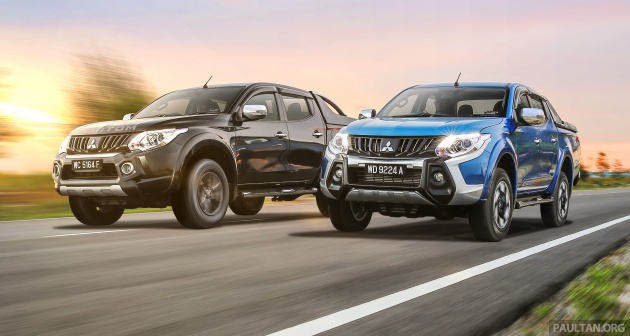
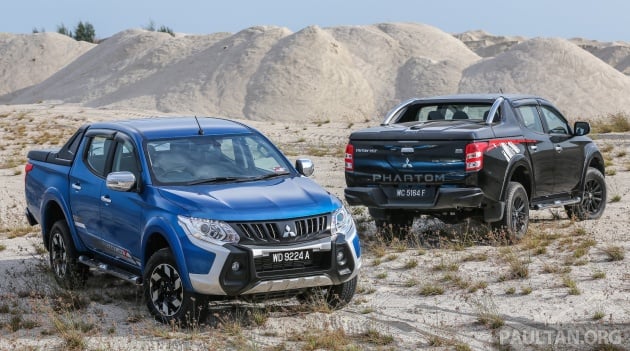
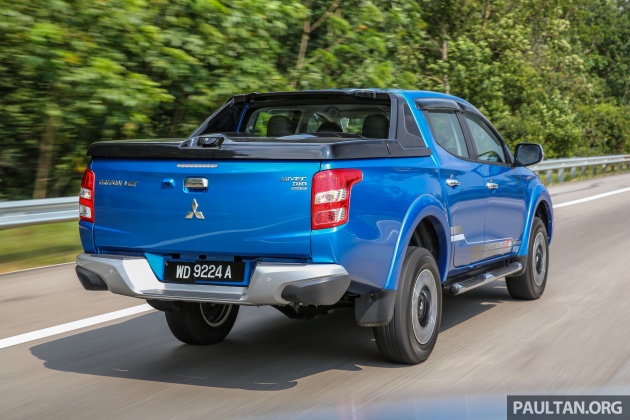
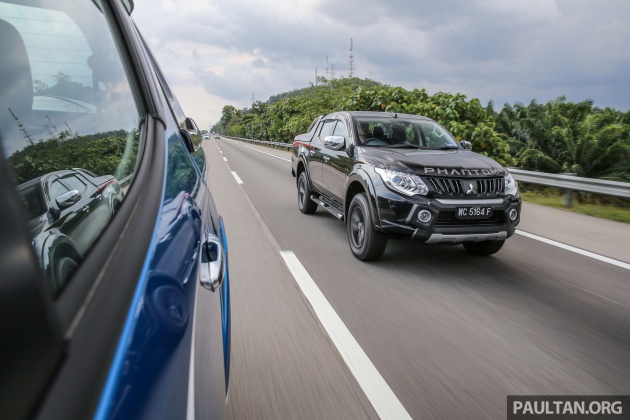

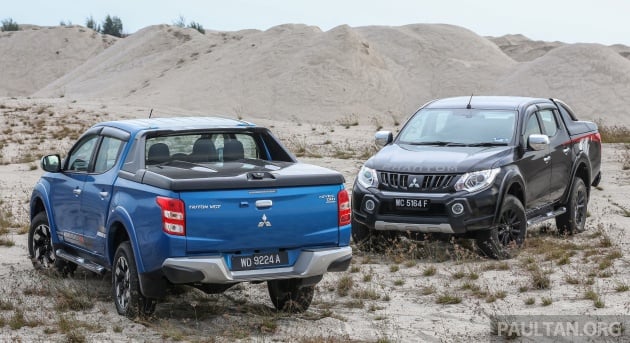
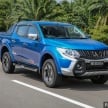
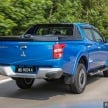
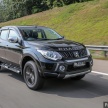
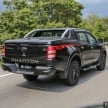
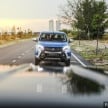
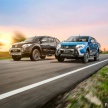
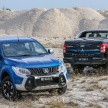
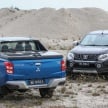
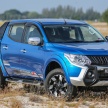
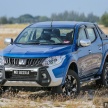
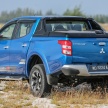
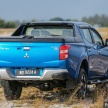
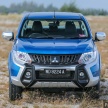
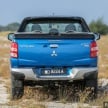
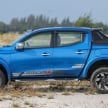
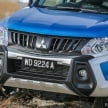
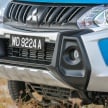
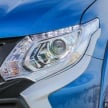
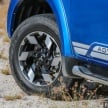

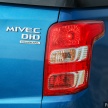
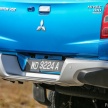
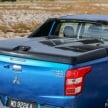
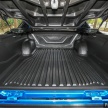
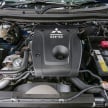
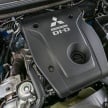

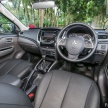
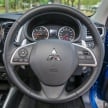
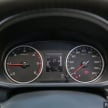
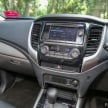
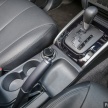
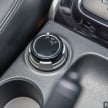
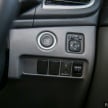
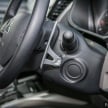
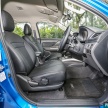
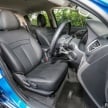
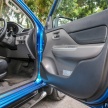
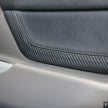
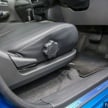

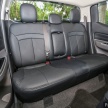
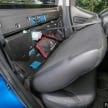
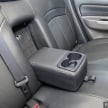
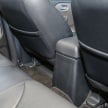












reading your article makes me feel the urge to order one now…
That is until you notice there is no VSC and only comes with 2 airbags.
For a truck costing 120k, having no ASC is absolutely unacceptable. I really want to know what were MMM thinking when speccing the Triton for our market. Top-spec Triton in other markets comes with 7 airbags, ASC+TC, lane departure warning and Super Select 4WD.
please buy truck with VSC… like hilux revo
Hilux with VSC still unbalance.
Proof : Google Moose Test Video
awesome test….
looking forward to the new pajero sport
I’m just stopping by to say the photos are amazing, especially the first one on top. Compliments to The Photographer.
Credit goes to our resident photographer, Sherman Sim #therealshermansim
still dont have ESC/VSC/ESP. tutup kedai la MMM
please buy something safer.
Exactly
agreed
Now that you got the reading/comparison, please check with mitsubishi japan what figure they declare, see if got scandal or not hahaha
There isn’t any doubt since thus engine is getting great reviews overseas
no VSC..save money from fuel..but cannot save a life if spin out.. i will drive my 2.4 hilux
hydroplane king. my company has many units total loss coz of this. will change to a diff manufacturer after this.
good photo.
Suitable for 3rd world countries where bad roads are the norm.
Excess, not access baggage. Can delete my message after the correction :)
Oh my, silly me. Thanks for the spot!
No deletion necessary :)
15% for what?? If can’t find a euro 5 station around your area like in the North, drive 30km everytime just for pumping fuel?
They can give us a great engine tech but lack of safety tech. So sad MMM
i thing problem for new triton mivec diesel used to oil diesel not many petrol station our diesel euro5..?
What is the average speed of 2.4 mivec to get 6.17L/100km fuel consumption?